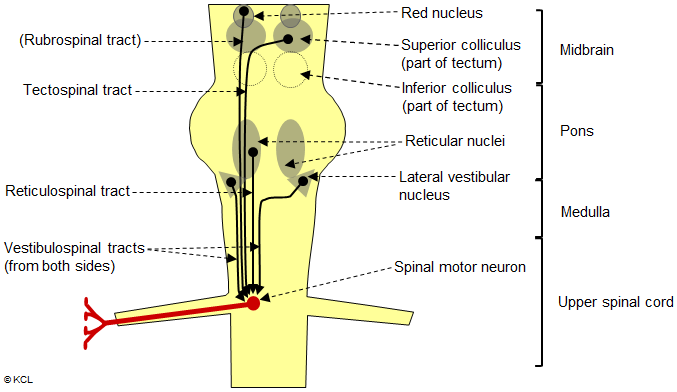- Key Concepts
Brainstem motor pathways in detail

This diagram shows the arrangement of the extrapyramidal tracts (excepting the medial longitudinal fasciculus) in the brainstem and upper spinal cord. Note: the inputs to only one side are shown, although they are bilaterally symmetrical in life.
KEY CONCEPTS:
A number of small tracts descend from the brainstem to the spinal cord, ipsilaterally and contralaterally. These include:
- Tectospinal tract from the superior colliculus.
- Vestibulospinal tract from the lateral vestibular nucleus.
- Reticulospinal tract from some reticular nuclei.
- Rubrospinal tract – present in some mammals but not recognized in humans.
- The medial longitudinal fasciculus is not included in this diagram, but is shown in the image on the MLF page.
Most of their axons end either indirectly or directly on spinal motor neurons, exciting or inhibiting them as they adjust posture, muscle tone, mediate startle responses to loud noises, bright lights etc, and work cooperatively with the pyramidal pathway to guide and facilitate voluntary actions.
Choose a menu item to the left, to continue


